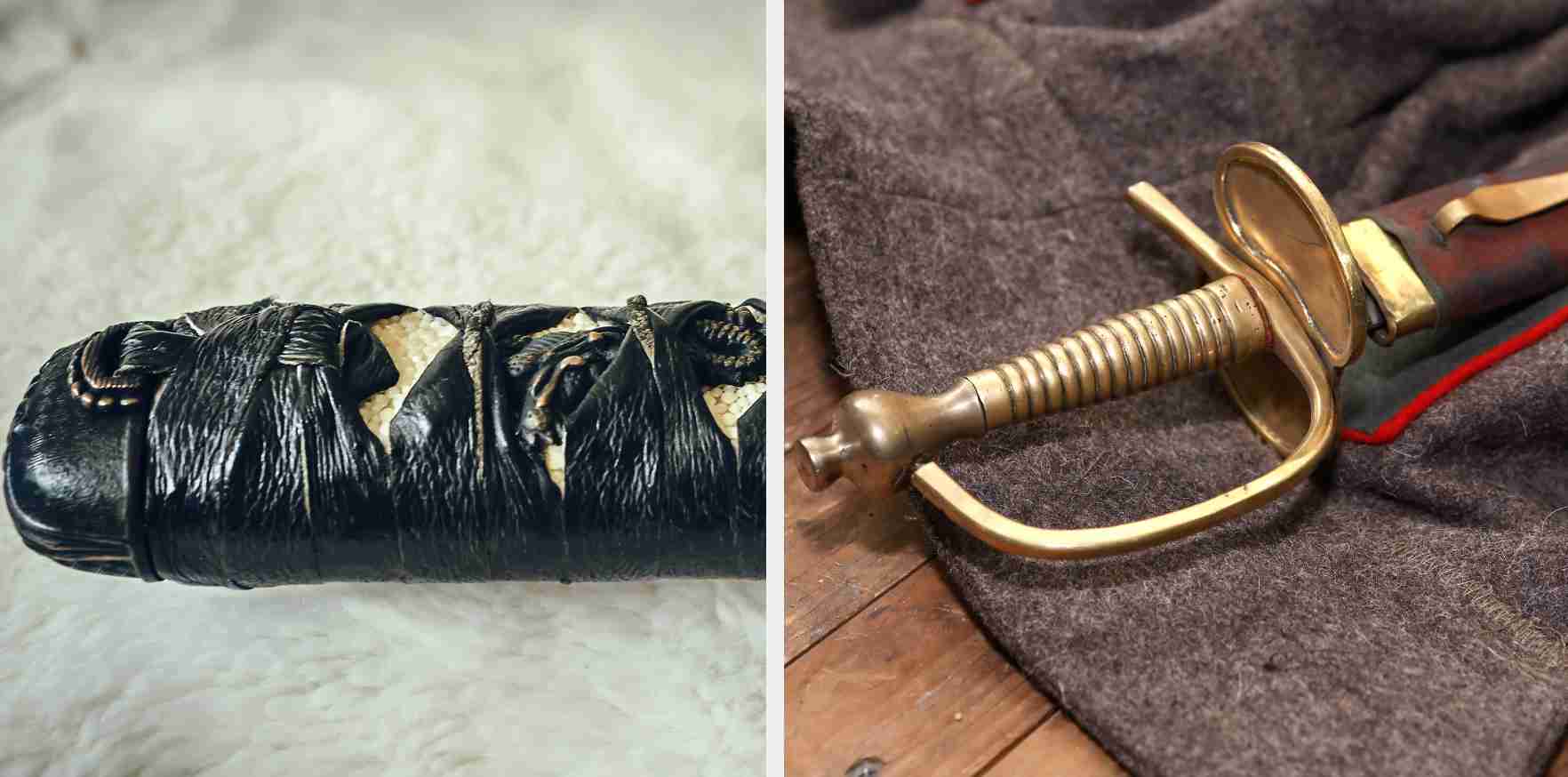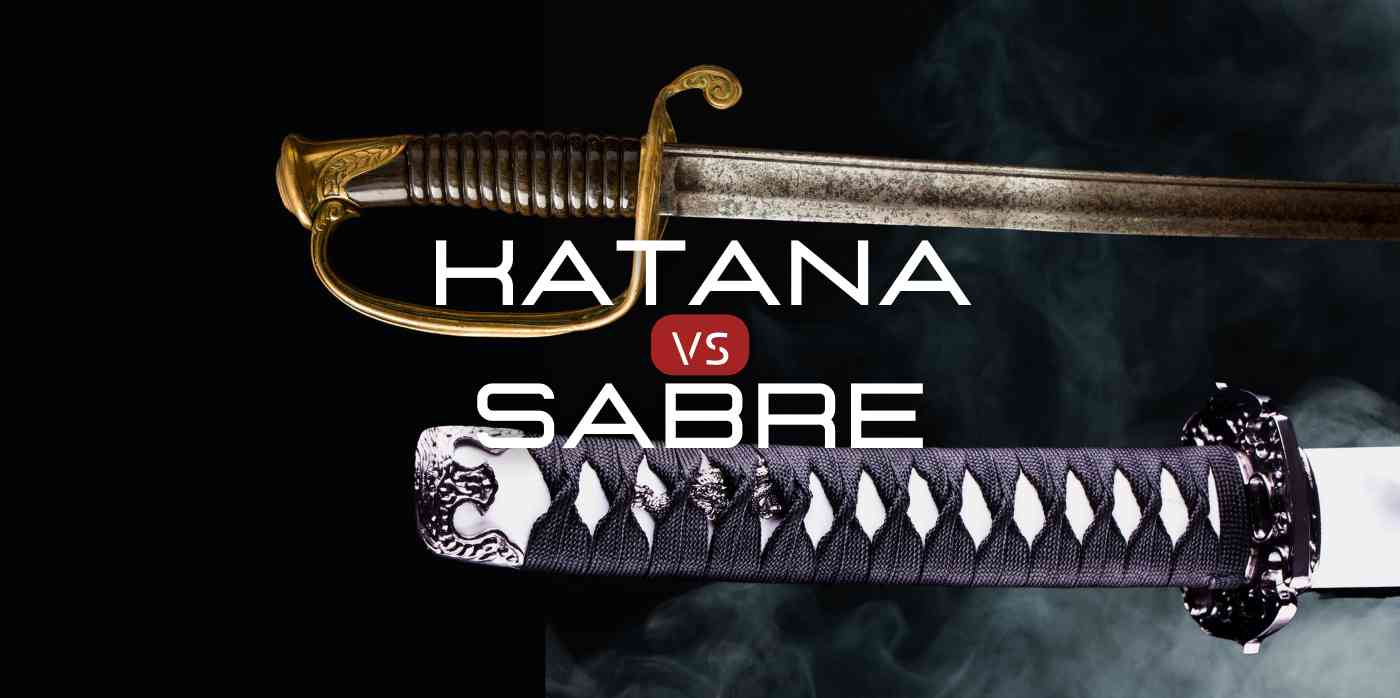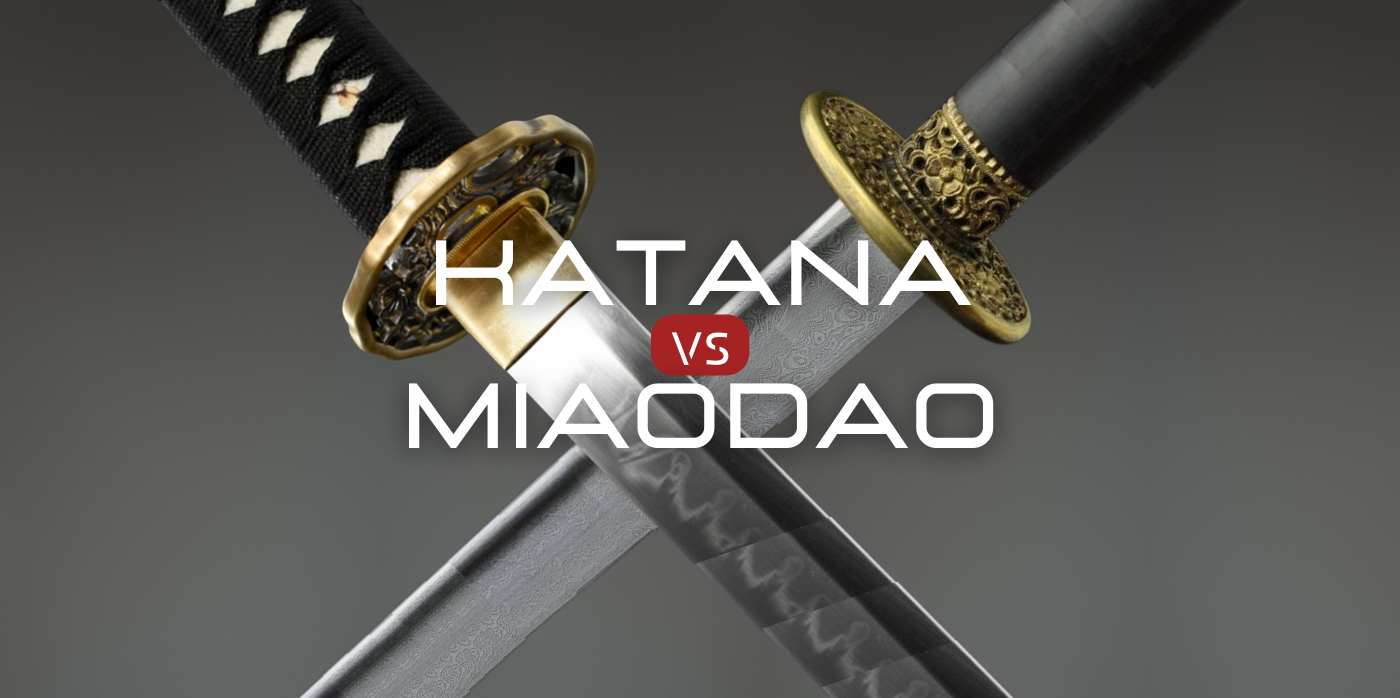Among the diverse pantheon of historical swords, two frequently draw the interest of enthusiasts and collectors: the Japanese Katana and the European Sabre. Both of these weapons hold a crucial place in their respective martial cultures and possess distinctive characteristics. In this article, we will put these two legendary blades head-to-head in a comprehensive comparison of the Katana vs Sabre, analysing design, function, history, and cultural significance.
1. Understanding the Katana and the Sabre
The Katana, often recognized as the soul of the Samurai, stands out with its unique curved blade, versatile two-handed grip, and distinct temper line known as the "hamon". Its deadly precision and formidable cutting power have made it a symbol of Japanese culture and Samurai code.
Conversely, the Sabre (saber), a sword with roots in the cavalry traditions of Europe, possesses a notably curved blade designed for swift slashing movements from horseback. While its purpose evolved over time, its prominence in the fields of dueling and fencing never waned.

2. Katana Craftsmanship Vs Sabre
The creation of a Katana is a meditative ritual, entailing a painstaking process of heating, folding, and cooling the steel multiple times. This method, unique to Japanese sword-making, results in a blade of unparalleled sharpness and durability.
In contrast, the crafting of a Sabre does not involve folding. Instead, European blacksmiths favored the process of pattern welding, a method that involves forging together different pieces of steel to achieve a sturdy and reliable blade.
3. Katana Parts Vs Sabre
3.1 Blade
The Katana's blade is slender and curved with a single cutting edge, culminating in a chisel-like point that allows for both cutting and thrusting. The Sabre's blade, however, is broader, heavily curved, and designed primarily for slashing, with thrusting being a secondary function.
3.2 Guard
The guard of a Katana, or 'tsuba', is typically circular or square and serves to protect the hand from incoming attacks. The Sabre's guard is more complex, often incorporating a knuckle bow and shell guard for comprehensive hand protection.
3.3 Handle
The Katana's handle, or 'tsuka', is designed for a two-handed grip, providing superior control during combat. In contrast, the Sabre's grip is typically shorter, designed for one-handed use and allows for greater mobility on horseback.
3.4 Pommel
The Katana's pommel, or 'kashira', often serves a largely decorative purpose, contributing to the balance of the weapon. The Sabre's pommel is generally heavier, providing a counterweight to the blade and aiding in the sword's overall balance.

4. Katana Characteristics Vs Sabre
4.1 Blade design
The Katana's blade design, characterized by its gentle curve and chisel-like point, is optimized for a combination of cutting and thrusting attacks. Conversely, the Sabre's blade, typically broader and heavily curved, is designed predominantly for slashing attacks, particularly from horseback.
4.2 Weight of the blade
The Katana is generally heavier than the Sabre, owing to its solid construction and material choice. Crafted for single-handed use, the Sabre's lighter design, averaging between 2.5 to 2.8lbs, lends the wielder the flexibility for rapid offensive and defensive movements. In contrast, the Katana, which has an average weight ranging from 2 to 3lbs, typically requires both hands for optimal control and power.
4.3 Sharpness
Both swords boast an impressive degree of sharpness. However, the Katana's edge, honed through the unique process of differential hardening, often surpasses the Sabre in terms of sharpness.
4.4 Grip
The Katana is designed with an extended, two-handed grip that delivers exceptional command and leverage, facilitating potent slash movements. Conversely, the Sabre is engineered with a one-handed grip, which promotes swift attacks and offers increased mobility, especially advantageous when utilized in cavalry charges.
4.5 Balance
The Katana's balance point is closer to the hilt, aiding in control and swift, powerful cuts. Conversely, the Sabre, due to its lighter design and one-handed grip, has a balance point located further down the blade, facilitating fast, sweeping movements.
4.6 Durability
The Katana's durability is legendary, owing to the unique Japanese sword-making process that involves folding the steel multiple times. Conversely, the Sabre, while robust, does not undergo this folding process, and its durability varies depending on the quality of the steel used and the specific blacksmithing techniques employed.
4.7 Reach
The Katana, with its longer blade and hilt, generally offers a greater reach than the Sabre, a strategic advantage in foot combat. However, when used from horseback as it was originally intended, the Sabre's reach is substantially extended.
Summary:
- The Katana's blade design facilitates cutting and thrusting, while the Sabre's is optimized for slashing.
- The Katana, being generally heavier, is known for its exceptional cutting force, whereas the Sabre's lighter weight enables nimble movements.
- Both are revered for their sharpness, although the Katana often earns higher accolades in this respect.
- The two-handed grip of the Katana provides remarkable control, contrasting with the Sabre's one-handed grip, which facilitates swift strikes and increased mobility.
- The Katana typically offers greater reach in foot combat, while the Sabre's reach is extended when used from horseback.

5. Katana Combat Style Vs Sabre
The combat styles associated with the Katana and Sabre reflect the unique design and functionality of each sword. The Katana's style, embodied in martial arts such as Kenjutsu, Iaido, and Kendo, emphasizes swift, powerful cuts and precision strikes from various angles.
On the other hand, the Sabre's combat style, often seen in historical European martial arts and modern Olympic fencing, leans towards rapid, slashing attacks and quick defensive maneuvers. The style also often includes a variety of complex hilt and blade actions designed to confuse or misdirect the opponent.
So...in a duel, which would have an advantage: a katana or a sabre?
Well, in a hypothetical duel, the outcome largely depends on the circumstances and the skill of the wielders. A Katana's superior cutting ability and reach could provide an advantage in foot combat, while the Sabre's swift, slashing style and one-handed mobility might offer an edge in a mounted duel or when maneuverability is paramount.
6. Katana Maintenance Vs Sabre
Swords require regular maintenance to retain their effectiveness, and both the Katana and the Sabre are no exceptions.
The Katana, with its high carbon steel blade, requires consistent cleaning and oiling to prevent rusting. Its lacquered wooden sheath, or saya, also needs regular checks to ensure it remains dry and clean.
On the other hand, the Sabre, particularly those made with modern materials, may require less maintenance. However, it should still be cleaned and oiled regularly, and its scabbard checked for moisture and debris.
7. History and Origin of the Katana Vs Sabre
The Katana and Sabre come from different parts of the world and were developed under distinct historical circumstances.
The Katana, the iconic sword of the Samurai, emerged in Feudal Japan as a response to changes in the nature of warfare, with battles increasingly fought on foot rather than horseback.
Conversely, the Sabre was predominantly a cavalry weapon, developed in Eastern Europe and adopted widely across the continent and beyond. Its design was influenced by the steppe warfare of nomadic cultures. The Sabre holds a significant place in French history, particularly during the Napoleonic era.
Regularly linked with the cavalry, the sabre stood as a symbol of the strategic military techniques prevalent in its era. The influential French military strategist and political figure, Napoleon Bonaparte, was widely acknowledged for his tactical prowess, making the sabre an essential component in his collection of military resources.
He strongly advocated for the employment of heavy cavalry, notably the esteemed cuirassiers, who were known for their bold charges into enemy formations with their robust, curved sabres.

Summary:
- The Katana and Sabre have distinct origins: the Katana from Feudal Japan and the Sabre from Eastern Europe.
- The Katana was developed as a response to changes in warfare, shifting from mounted to foot combat.
- The Sabre, a cavalry weapon, was influenced by the steppe warfare of nomadic cultures.
Conclusion
While both the Katana and Sabre are distinguished swords in their respective contexts, they possess distinct traits molded by their cultural histories and practical applications. By juxtaposing these two legendary armaments, we not only revel in the masterful craftsmanship embedded in their construction but also enhance our comprehension of the formidable warriors who expertly brandished them.





